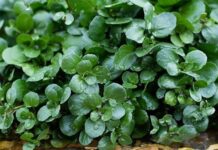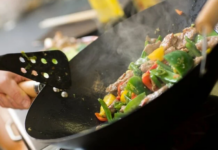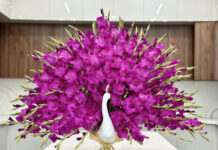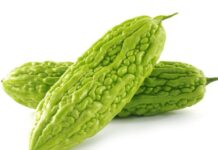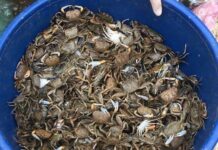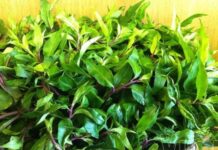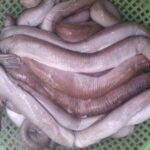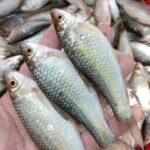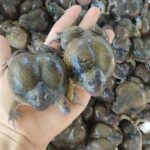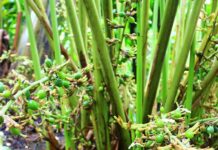The Hidden Treasure Within Bamboo Forests
Bamboo worms, the larvae of a specific moth species, are parasites that inhabit the hollow insides of bamboo, reed, and cane plants. During the rainy season, from May to September, female moths seek out young bamboo stalks to lay their eggs. Once hatched, the larvae feed on the tender inner parts, growing plump and residing within the hollow bamboo. Locals often say, “A bamboo with worms is blessed by heaven.” Not every bamboo grove harbors these worms, and finding them is truly a gift from nature.
In the past, when people accidentally cut down bamboo containing these worms, many would discard them in fear, as their plump, wriggling appearance resembled coconut grubs. However, for the Thai and Muong ethnic groups, these worms are a rare delicacy—available only during a specific season. Each rainy season, villagers venture into the forest to hunt for bamboo worms. They carefully inspect bamboo groves for signs of infestation, chop down the stalks, and gently split them open to avoid damaging the worms. The plump, pale yellow larvae, about 2–3 cm long, are then collected in bamboo tubes or rattan baskets.
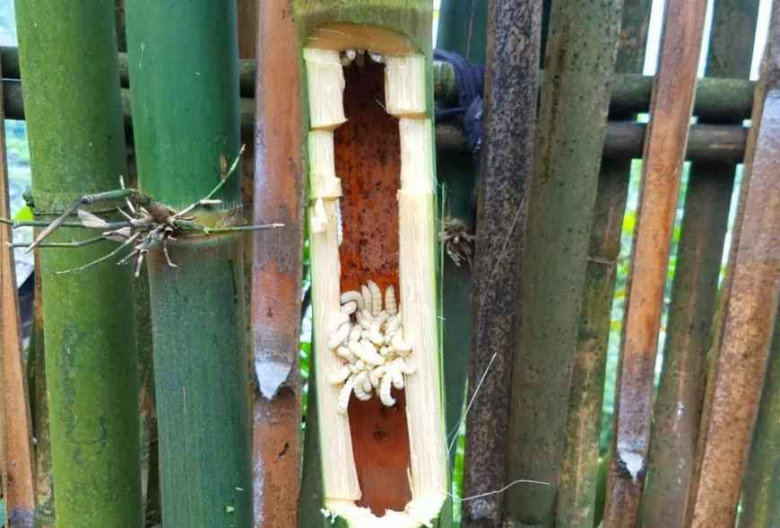
Despite their unappealing appearance, bamboo worms are a prized delicacy in Northwest Vietnam.
From “Creepy” to Gourmet: A High-Value Delicacy
Finding even a few hundred grams of bamboo worms is no easy feat. Hunters must venture deep into the forest, carefully observing bamboo groves, listening for insect sounds, and spotting signs of withering stalks. Each fresh batch of worms is considered a heavenly gift, both enhancing meals and providing significant income. On average, a kilogram of fresh bamboo worms fetches between 400,000 and 600,000 VND, depending on their plumpness. In scarce seasons, prices can soar to 800,000 VND/kg, yet restaurants in Hanoi and Ho Chi Minh City still place continuous orders.
Once feared, bamboo worms are now a sought-after delicacy. After cleaning, they can be grilled over charcoal, fried in butter, stir-fried with lemon leaves, or steamed with sticky rice. When cooked, their golden, crispy exterior contrasts with their soft, fatty interior, releasing a rich, distinctive aroma. Many compare their flavor to a blend of pork fat and young shrimp—both rich and sweet, with a subtle forest essence.
Beyond their taste, bamboo worms are highly nutritious. Studies show they contain up to 70% protein—far exceeding beef or fish. They are also rich in vitamins B and E, along with minerals like iron, zinc, and calcium, which boost immunity, enhance memory, and aid digestion. Highlanders believe consuming bamboo worms promotes strength and endurance, especially during strenuous labor.
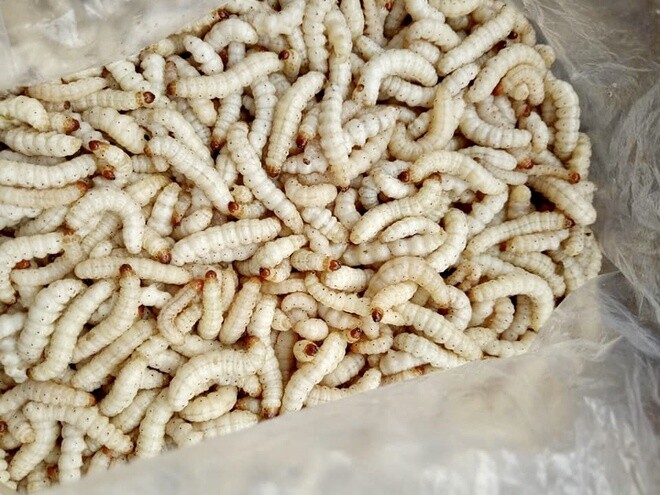
These larvae can be transformed into delicious, nutrient-rich dishes.
Heaven’s Gift from the Northwest Mountains
Today, thanks to cold storage technology, Northwest bamboo worms grace the menus of many specialty restaurants. Harvested from natural forests, they are carefully processed, packaged, and shipped nationwide. Urban food enthusiasts eagerly pay to savor this “heavenly delicacy,” driven by curiosity and a desire to experience the authentic flavors of the mountains.
Many travelers recall their Northwest journeys, cherishing the memory of fragrant grilled bamboo worms in a small village. Amidst the crackling charcoal fire, the rich flavor blends with the sounds of traditional flutes and babbling streams, creating an unforgettable culinary experience.
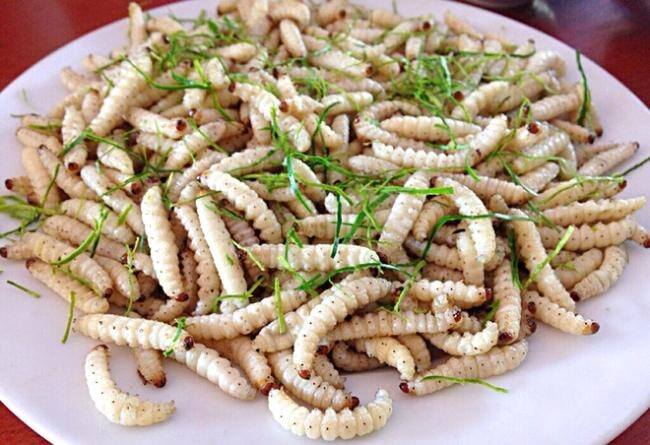

Once a forest delicacy, bamboo worms are now a sought-after specialty in restaurants and pubs, beloved by food lovers.
From once-feared larvae to a symbol of Northwest culinary richness, each tiny bamboo worm embodies the essence of nature—bamboo, rain, and mountains. In today’s modern world, such rustic dishes remind us to cherish the pristine flavors nature offers—a heavenly gift from the wild, leaving an indelible mark on those brave enough to try.


